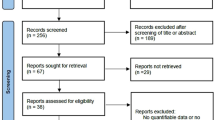Abstract
Introduction
It is important to know whether a parotid gland lesion is in the superficial or deep lobe for preoperative planning. We aimed to investigate the ability of 3.0 T magnetic resonance (MR) imaging with surface coils to identify the intraparotid facial nerve and locate parotid gland lesions, in comparison to other indirect landmark methods.
Methods
We retrospectively evaluated 50 consecutive patients with primary parotid gland lesions. The position of the facial nerve was determined by tracing the nerve in the stylomastoid foramen and then following it on sequential MR sections through the parotid gland. The retromandibular vein and the facial nerve line (FN line) were also identified. For each radiologist and each method, we determined the diagnostic ability for deep lobe lesions and superficial lobe lesions, as well as accuracy. These abilities were compared among the three methods using the Chi-square test with Yates' correction.
Results
Mean diagnostic ability for deep lobe lesions, the diagnostic ability for superficial lobe lesions, and accuracy were 92%, 86%, 87%, respectively, for the direct identification method; 67%, 89%, 86%, respectively, for the retromandibular vein method; and 25%, 99%, 90% , respectively, for the FN line method. The direct identification method had significantly higher diagnostic ability for deep lesions than the FN line method (P < 0.01), but significantly lower diagnostic ability for superficial lobe lesions than the FN line method (P < 0.01).
Conclusion
Direct identification of the intraparotid facial nerve enables parotid gland lesions to be correctly located, particularly those in the deep lobes.




Similar content being viewed by others
References
Gaillard C, Perie S, Susini B, St Guily JL (2005) Facial nerve dysfunction after parotidectomy: the role of local factors. Laryngoscope 115:287–291
Teresi LM, Kolin E, Lufkin RB, Hanafee WN (1987) MR imaging of the intraparotid facial nerve: normal anatomy and pathology. AJR Am J Roentgenol 148:995–1000
Thibault F, Halimi P, Bely N, Chevallier JM, Bonfils P, Lellouch-Tubiana A, Frija G (1983) Internal architecture of the parotid gland at MR imaging: facial nerve or ductal system? Radiology 188:701–704, discussion 705
Eracleous E, Kallis S, Tziakouri C, Blease S, Gourtsoyiannis N (1997) Sonography, CT, CT sialography, MRI and MRI sialography in investigation of the facial nerve and the differentiation between deep and superficial parotid lesions. Neuroradiology 39:506–511
Ariyoshi Y, Shimahara M (1998) Determining whether a parotid tumor is in the superficial or deep lobe using magnetic resonance imaging. J Oral Maxillofac Surg 56:23–26, discussion 26–27
de Ru JA, van Benthem PP, Hordijk GJ (2002) The location of parotid gland tumors in relation to the facial nerve on magnetic resonance images and computed tomography scans. J Oral Maxillofac Surg 60:992–994, discussion 995
Ragbir M, Dunaway DJ, Chippindale AJ, Latimer J, Mohammed F, McLean NR (2002) Prediction of the position of the intraparotid portion of the facial nerve on MRI and CT. Br J Plast Surg 55:376–379
Divi V, Fatt MA, Teknos TN, Mukherji SK (2005) Use of cross-sectional imaging in predicting surgical location of parotid neoplasms. J Comput Assist Tomogr 29:315–319
Dailiana T, Chakeres D, Schmalbrock P, Williams P, Aletras A (1997) High-resolution MR of the intraparotid facial nerve and parotid duct. AJNR Am J Neuroradiol 18:165–172
Takahashi N, Okamoto K, Ohkubo M, Kawana M (2005) High-resolution magnetic resonance of the extracranial facial nerve and parotid duct: demonstration of the branches of the intraparotid facial nerve and its relation to parotid tumours by MRI with a surface coil. Clin Radiol 60:349–354
Koktzoglou I, Chung YC, Mani V, Carroll TJ, Morasch MD, Mizsei G, Simonetti OP, Fayad ZA, Li D (2006) Multislice dark-blood carotid artery wall imaging: a 1.5 T and 3.0 T comparison. J Magn Reson Imaging 23:699–705
Lemke AJ, Alai-Omid M, Hengst SA, Hengst SA, Kazi I, Felix R (2006) Eye imaging with a 3.0-T MRI using a surface coil—a study on volunteers and initial patients with uveal melanoma. Eur Radiol 16:1084–1089
Yarnykh VL, Terashima M, Hayes CE, Shimakawa A, Takaya N, Nguyen PK, Brittain JH, McConnell MV, Yuan C (2006) Multicontrast black-blood MRI of carotid arteries: comparison between 1.5 and 3 tesla magnetic field strengths. J Magn Reson Imaging 23:691–698
Mehle ME, Kraus DH, Wood BG, Benninger MS, Aliachar I, Levine HL, Tucker HM, Levertu P (1993) Facial nerve morbidity following parotid surgery for benign disease: the Cleveland Clinic Foundation experience. Laryngoscope 103:386–388
Bron LP, O'Brien CJ (1997) Facial nerve function after parotidectomy. Arch Otolaryngol Head Neck Surg 123:1091–1096
Nouraei SA, Ismail Y, Ferguson MS, McLean NR, Milner RH, Thomson PJ, Welch AR (2008) Analysis of complications following surgical treatment of benign parotid disease. ANZ J Surg 278:134–138
Marchesi M, Biffoni M, Trinchi S, Turriziani V, Campana FP (2006) Facial nerve function after parotidectomy for neoplasms with deep localization. Surg Today 36:308–311
Aygun N, Zinreich SJ (2006) Head and neck imaging at 3T. Magn Reson Imaging Clin N Am 14:89–95
Laing MR, McKerrow WS (1998) Intraparotid anatomy of the facial nerve and retromandibular vein. Br J Surg 75:310–312
Kopuz C, Ilgi S, Yavuz S, Onderoglu S (1995) Morphology of the retromandibular vein in relation to the facial nerve in the parotid gland. Acta Anat (Basel) 152:66–68
Acknowledgment
We are grateful to Eijiro Yamashita, B.S., Takuro Tanaka, B.S., Naoki Iwata, B.S., and Shota Sakimoto, B.S., for technical support in obtaining the high-quality MR images used in this study.
Conflict of interest statement
We declare that we have no conflict of interest.
Author information
Authors and Affiliations
Corresponding author
Rights and permissions
About this article
Cite this article
Ishibashi, M., Fujii, S., Kawamoto, K. et al. The ability to identify the intraparotid facial nerve for locating parotid gland lesions in comparison to other indirect landmark methods: evaluation by 3.0 T MR imaging with surface coils. Neuroradiology 52, 1037–1045 (2010). https://doi.org/10.1007/s00234-010-0718-1
Received:
Accepted:
Published:
Issue Date:
DOI: https://doi.org/10.1007/s00234-010-0718-1




